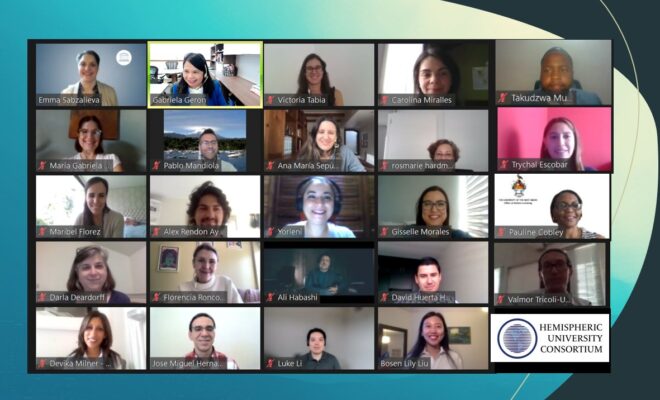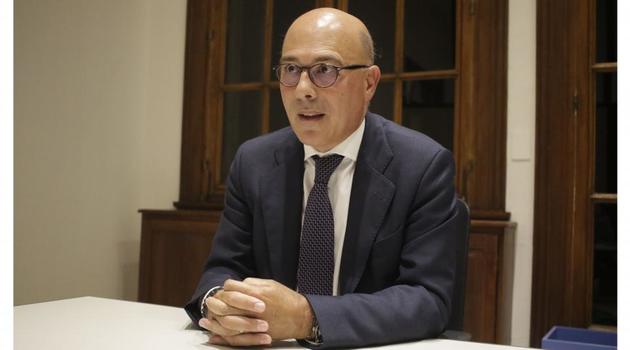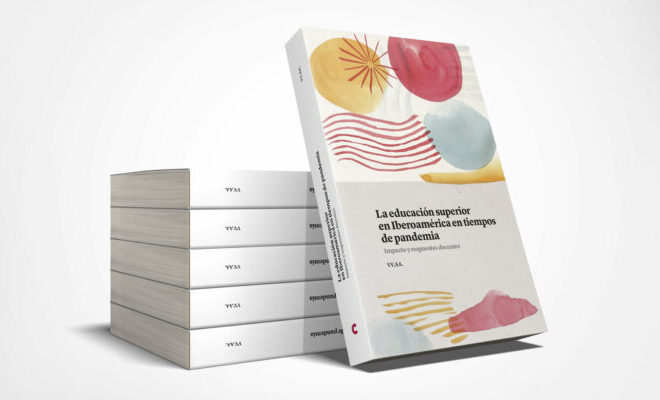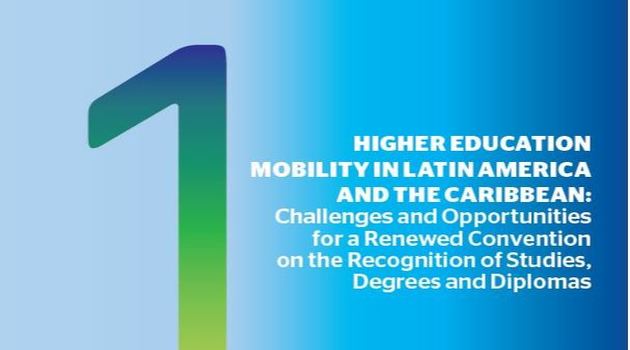UNESCO IESALC Virtual Student Mobility team shares expertise and experiences with Hemispheric University Consortium

By Emma Sabzalieva | Virtual student mobility (VSM) is a rapidly developing area of practice for higher education institutions around the world, many of whom are experimenting with alternative forms of student mobility for the first time as a result of the Covid-19 pandemic.
IESALC’s VSM project is examining the potential of VSM to promote quality education that is equitable and accessible, and providing support and guidance on VSM to higher education institutions and policymakers around the world. The project is promoting the integration of VSM into higher education student mobility in the long term, both as a standalone form of mobility as well as in conjunction with more traditional forms of physical mobility.
IESALC was delighted to have the opportunity to present the latest findings from the VSM project to over 20 members of the Hemispheric University Consortium (HUC) Collaborative Online International Learning working group on 20 April 2021. HUC was founded in 2018 and currently brings together 14 universities in Latin America, the Caribbean, and North America. Driven by the Sustainable Development Goals, HUC members facilitate problem-based collaborations in education, research and innovation to generate the knowledge and solutions necessary to confronting the key challenges facing not only the hemispheric but also the globe.
The VSM team began by sharing IESALC’s definition of VSM:
“Virtual student mobility (VSM) is a form of mobility that uses information and communication technologies to facilitate cross-border and/or inter-institutional academic, cultural, and experiential exchanges and collaboration.”
VSM has the potential to foster inclusiveness by providing mobility opportunities at lower cost and offering greater accessibility for students with physical disabilities. However, there are risks that it could create different inequalities relating to availability of the internet and technology, digital literacies and the perception that VSM is inferior to physically crossing borders.
Assuring quality in VSM is vital to student success, inter-institutional partnerships and global and regional recognition of international courses and qualifications. Challenges include integrating VSM into institution’s existing course offerings, supporting and training learners and teachers to make the most of VSM opportunities, and the lack of practical guidance for higher education institutions and policymakers on good practices in VSM.
Collaborations with networks such as HUC offer a valuable way for IESALC not only to share findings from the VSM project but to learn from the innovations of higher education institutions that are implementing VSM projects. For example, HUC member the Universidad de los Andes (Colombia) shared their Virtual International Program (VIP) which aims to build a global community of students and teachers. Based on the success of this first meeting, IESALC and HUC are already planning additional ways to connect on the development of VSM.
RELATED ITEMS








